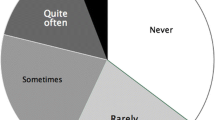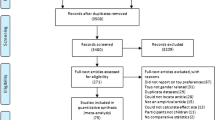Abstract
Researchers in comparative psychology often use different food rewards in their studies, with food values defined by a pre-experimental preference test. While this technique rank orders food values, it provides limited information about value differences because preferences may reflect not only value differences, but also the degree to which one good may “substitute” for another (e.g., one food may substitute well for another food, but neither substitutes well for water). We propose scaling the value of food pairs by a third food that is less substitutable for either food offered in preference tests (cross-modal scaling). Here, Cebus monkeys chose between four pairwise alternatives: fruits A versus B; cereal amount X versus fruit A and cereal amount Y versus fruit B where X and Y were adjusted to produce indifference between each cereal amount and each fruit; and cereal amounts X versus Y. When choice was between perfect substitutes (different cereal amounts), preferences were nearly absolute; so too when choice was between close substitutes (fruits); however, when choice was between fruits and cereal amounts, preferences were more modest and less likely due to substitutability. These results suggest that scaling between-good value differences in terms of a third, less-substitutable good may be better than simple preference tests in defining between-good value differences.


Similar content being viewed by others
Notes
Scaling the value of two foods, A and B, may be done relatively [A/B or A/(A + B)] or in terms of differences (A − B). Given the absence of evidence resolving how value comparisons should be scaled (e.g., see Birnbaum 1980), we refer to value comparisons in both ways, with language selection governed by the context of discussion and not by the endorsement of a particular dependent variable.
References
Beran MJ, Savage-Rumbaugh ES, Pate JL, Rumbaugh DM (1999) Delay of gratification in chimpanzees (Pan troglodytes). Dev Psychobiol 34:119–127
Birnbaum MH (1980) Comparison of two theories of “ratio” and “difference” judgments. J Exp Psychol Gen 109:304–319
Bräuer J, Call J, Tomasello M (2006) Are apes really inequity averse? Proc R Soc Lond B Biol Sci 273:3123–3128
Brosnan SF, de Waal FBM (2003) Monkeys reject unequal pay. Nature 425:297–299
Brosnan SF, Schiff HC, de Waal FBM (2005) Tolerance for inequity may increase with social closeness in chimpanzees. Proc R Soc Lond B Biol Sci 272:253–258
Dindo M, de Waal FBM (2007) Partner effects on food consumption in brown capuchin monkeys. Am J Primatol 69:1–9
Evans TA, Beran MJ (2007) Delay of gratification and delay maintenance by rhesus macaques (Macaca mulatta). J Gen Psychol 134:199–216
Fontenot MB, Watson SL, Roberts KA, Miller RW (2007) Effects of food preferences on token exchange and behavioural responses to inequality in tufted capuchin monkeys, Cebus apella. Anim Behav 74:487–496
Herrnstein RJ (1970) On the law of effect. J Exp Anal Behav 13:243–266
Hodos W (1961) Progressive ratio as a measure of reward strength. Science 134:943–944
Hull CL (1943) Principles of behavior. Appleton-Century-Crofts, New York
Hursh SR (1980) Economic concepts for the analysis of behavior. J Exp Anal Behav 34:219–238
Hursh SR, Silberberg A (2008) Economic demand and essential value. Psychol Rev 115:186–198
Nevin JA (1992) An integrative model for the study of behavioral momentum. J Exp Anal Behav 57:301–316
Silberberg A, Crescimbene L, Addessi E, Anderson JR, Visaberghi E (2009) Does inequity aversion depend on a frustration effect? A test with capuchin monkeys (Cebus apella). Anim Cogn 12:505–509
Skinner BF (1932a) Drive and reflex strength. J Gen Psychol 6:22–37
Skinner BF (1932b) Drive and reflex strength: II. J Gen Psychol 6:38–48
Skinner BF (1938) The behavior of organisms: an experimental analysis. Appleton-Century-Crofts, New York
van Wolkenten M, Brosnan SF, de Waal FBM (2007) Inequity responses of monkeys modified by effort. Proc Natl Acad Sci USA 104:18854–18859
Wynne CDL, Bolhuis JJ (2008) Minding the gap: why there is still no theory in comparative psychology. Behav Brain Sci 31:152–153
Author information
Authors and Affiliations
Corresponding author
Rights and permissions
About this article
Cite this article
Casey, A.H., Silberberg, A., Paukner, A. et al. Defining reward value by cross-modal scaling. Anim Cogn 17, 177–183 (2014). https://doi.org/10.1007/s10071-013-0650-y
Received:
Revised:
Accepted:
Published:
Issue Date:
DOI: https://doi.org/10.1007/s10071-013-0650-y




